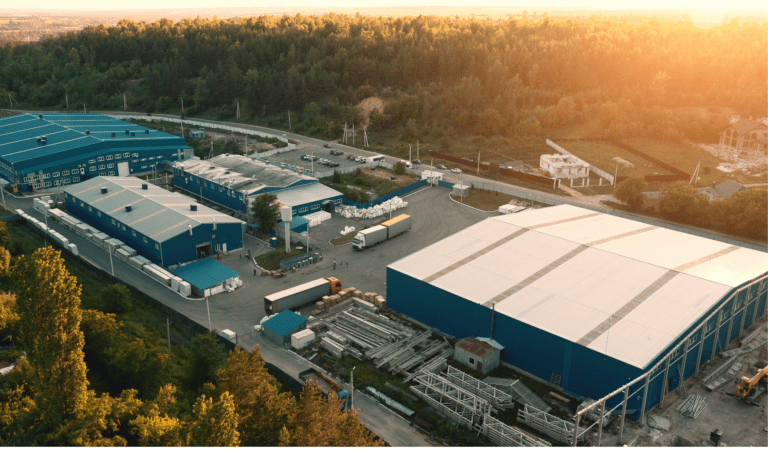If you manage, or own a fleet, of commercial vehicles, we don’t need to tell you that DOT Compliance can be a complex aspect of your job. Especially when it comes to making sure your drivers are compliant with the Federal Motor Carrier Association (FMCSA) rules, it’s important to break down each regulation carefully.
And the FMCSA’s Drug & Alcohol Testing Program is no exception. It’s in place to make sure that the drivers on America’s roadways are safe and sober, so it’s a key element of DOT Compliance. Our goal is to help you sift through some of the complexities of Drug & Alcohol Testing, so you and your team can take to the road with confidence.
DRUG & ALCOHOL TESTING IS MANDATORY
According to the FMCSA, Drug & Alcohol Testing Program is mandatory and applies to:
-
Anyone employing CDL drivers to operate commercial motor vehicles (CMVs) on public roads
-
CDL drivers who operate CMVs on public roads
-
Interstate motor carriers
-
Intrastate motor carriers
-
Federal, State, and local governments
-
Civic organizations (disabled veteran transport, boy/girl scouts, etc.)
-
Faith-based organizations
This means that pretty much every large truck or bus you see on the roadways is heavily regulated. And government regulations to monitor drivers with CDL’s for sobriety have already had positive results since the Omnibus Transportation Employee Testing Act was passed in 1991.
In 1982, 17% of fatally injured large truck drivers had BAC’s above the legal limit. In 2016, the latest year with available data, the number had swooped down to 2% for truck drivers.
TRAINING & EDUCATION REQUIREMENTS
Proper training is an important aspect of staying DOT Compliant and adhering to Federal regulations.
As a fleet owner, you must provide your employees with comprehensive educational materials that break down the guidelines about drug and alcohol use for CDL drivers; rules about drug and alcohol testing; the effects of drug and alcohol on healthy and safety; and the consequences of not following these protocols.
In addition, all supervisors need to have at least 60 minutes of training on alcohol abuse and at least 60 minutes of training on controlled substance use. This training should help supervisors identify the signs that a driver may be under the influence – and what actions they should take in that situation.
WHAT DRIVERS NEED TO KNOW ABOUT TESTING
WHAT YOU’RE TESTED FOR
The key takeaway of DOT Compliance is that there are serious consequences for doing safety-sensitive activities (driving, unloading, inspecting, repairing, or even waiting to be dispatched) while under the influence of alcohol or other drugs. This is what your tests will cover:
-
Marijuana
-
Cocaine
-
Opiates – opium and codeine derivatives
-
Amphetamines and methamphetamines
-
Phencyclidine – PCP
-
Alcohol (concentrations of 0.02 or higher)
WHEN TO EXPECT DRUG & ALCOHOL TESTS
PRE-EMPLOYMENT TESTING
Before you get on the road, you need to undergo testing for alcohol and controlled substances. The only exception to this is if you have participated in a controlled substance program within the last 30 days and have received a test within the past six months or have been in a random-check program for the past 12 months. In these cases, your employer can go through a process of checking your documentation that asserts you’ve already received your tests.
POST-ACCIDENT TESTING
After an accident, be prepared to take a test. Recognize that test-refusal will result in serious consequences, so it’s important to comply with authorities and with your employer. You will be tested as soon as possible following a major accident, within eight hours for alcohol and within 32 hours for controlled substances.
RANDOM TESTING
Periodically, you will need to submit to random alcohol and drug tests issued by your employer. These tests are designed to be fair and impartial, so no one driver is more likely to get issued a test than any other driver.
REASONABLE SUSPICION TESTING
If your employer has any reason to think that you may be under the influence, it’s their duty to issue an alcohol or drug test. So, if they notice any slurred speech or strange behavior, they have every right to make sure you are tested before you get back on the road.
RETURN-TO-DUTY TESTING
If you refuse a test or test positive, you can’t perform your job until you’ve seen a Substance Abuse Professional (SAP). You have to complete the SAP process, then take a Federally issued drug and alcohol test.
FOLLOW-UP TESTING
Once you’ve passed your return-to-duty testing, you’re going to be subject to Follow-up testing. This means that your SAP is going to administer (and observe) six tests in the space of 12 months – up to an additional four years.
WHAT EMPLOYERS NEED TO KNOW
First of all, if you are an employer and also operate vehicles in your fleet, you are subject to the same regulations as the rest of your drivers. And when it comes to making sure drivers are compliant, employers have the ultimate responsibility. Here are some things to keep in mind as an employer:
ADMINISTERING TESTS
The minute you start your motor vehicle operation, you have to start implementing drug and alcohol testing. From the pre-employment to the random testing, it’s your responsibility to make sure your employees have undergone alcohol and controlled substance testing at every step of the process. You’re required to let your employees know that testing is a mandatory aspect of the job.
WHEN TO REMOVE DRIVERS
As an employer, you have the tough yet pivotal responsibility not only of making sure your employees are up to date on their tests, but of removing them from safety-sensitive functions (driving, inspecting, etc.) in all of the following cases:
-
If you know your driver has a BAC of 0.04 or higher.
-
If you discover your employee is drinking alcohol or using controlled substances during safety-sensitive functions.
-
If you know your driver has drank alcohol in the past 4 hours before working.
-
If your driver refuses to participate in a drug and alcohol test.
If your driver fails or refuses a test, or shows up to the job with a higher-than-acceptable BAC, then it’s your responsibility to find a qualified SAP for your employee. They can’t resume their normal work activities until they’ve been cleared by the SAP and passed a drug and alcohol test.
RETENTION OF RECORDS & REPORTING OF RESULTS
Keep records of alcohol and drug testing to remain DOT Compliant. If your employer has BAC tests of less than 0.02 and is negative on a drug test, you only need to retain that record for one year. If, however, the driver showed a BAC of .02 or greater, was positive on a controlled substance test, or refused a test, you’re required to retain that information for five years. Keep a permanent record that you’ve adequately trained your employees and supervisors.
You need to be able to provide a full calendar-year summary of your tests and training to FMCSA when requested, regarding your process for drug and alcohol testing.
LOOKING TO THE FUTURE: THE CDL DRUG & ALCOHOL CLEARING HOUSE
Starting in early 2020, FMCSA will require employers to submit information to the Drug & Alcohol Clearing House if any employee fails a drug or alcohol test or refuses to take a test. This also goes for if a driver uses alcohol while driving or is drinking prior to driving. The Clearinghouse will retain information about drivers, and act as a database of information for employers and drivers.
LEARN MORE ABOUT DOT COMPLIANCE
DOT Compliance is a complex and comprehensive topic that can be overwhelming for many fleet managers. That’s why we created software specifically designed to help you keep your fleet safe and compliant. From paperless DVIR’s to convenient digital reports, Whip Around envisions simplified processes for a complicated field. If you want to get in touch about your free demo, contact us today.DOT Compliance Tips: Drug and Alcohol Testing for drivers






